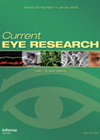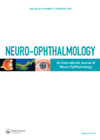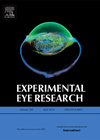
Journal Reviews
Detecting apoptosis in retinal cells
This is a review paper in which the authors summarise the transitioning of techniques detecting apoptosis from bench to bedside, along with the future possibilities they encase. Detection of Apoptosis in Retinal Cells (DARC) technology can be used as a...
Cataract in patients with pseudoexfoliation syndrome
The authors present a prospective comparative study in 43 patients with (group 1) or without (group 2) pseudoexfoliation (PXF) undergoing cataract surgery. Anterior capsule samples were obtained in all patients and analysed for signs of apoptosis by using special staining...
Efficacy of browpexy with blepharoplasty
This is a retrospective case series evaluating the efficacy of and comparing the surgical results between internal (IB) and external browpexy (EB) surgery in lifting central and lateral brow. Patients who underwent blepharoplasty without brow lift were used as a...
An unusual third nerve palsy case report
The authors present the unusual case of a 23-year-old male presenting to hospital with right eye pain, right upper eyelid ptosis, blurred vision and diplopia, developing immediately after a penetrating injury to his right upper eyelid. On assessment he was...
An unusual case of partial oculomotor nerve palsy
The authors present an unusual case of intra-axial oculomotor nerve involvement due to midbrain infarction. The 65-year-old male patient presented with unilateral complete blepharoptosis and slight limitation of upgaze. Neurological examination revealed a complete ptosis of the left eyelid, slight...
PD-1 and retinal ganglion cell death
Death of retinal ganglion cells (RGC) in conditions like glaucoma leads to permanent visual loss. RGC death can be due to the initial stress such as raised intraocular pressure or secondary to mechanism such as oxidative stress. Programmed cell death-1...








